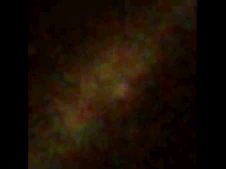Fermi Gamma-ray Space Telescope
| Fermi Gamma-ray Space Telescope | |
 En konceptbild av Fermi-satelliten. | |
| Allmän information | |
|---|---|
| Status | Aktiv |
| Större entreprenör | General Dynamics |
| Uppkallad efter | Enrico Fermi |
| NSSDC ID | 2008-029A[1] |
| Webbplats | fermi.gsfc.nasa.gov |
| Uppskjutning | |
| Uppskjutningsplats | Cape Canaveral AFS |
| Uppskjutning | 11 juni 2008, 16:05 UTC |
| Uppskjutningsfarkost | Delta II |
Fermi Gamma-ray Space Telescope är ett rymdbaserat teleskop avsett för kosmisk gammaastronomi. Teleskopet kallades tidigare för GLAST (en akronym för Gamma-ray Large Area Space Telescope), men har nu namn efter fysikern Enrico Fermi. Det sköts upp från Cape Canaveral Air Force Station den 11 juni 2008 efter tio års planering och konstruktion. Teleskopet kommer att utforska högenergiprocesser i universum.
Teleskopet är utrustat med två separata detektorer, vilka är designade att studera astrofysik och kosmologiska sammanhang hos fenomen som ackretionsskivor och pulsarer. Fermi är ett internationellt samarbetsprojekt mellan statliga myndigheter i USA (bland andra Nasa), Frankrike, Tyskland, Italien, Japan och Sverige[2]. Svenska deltagare är institutioner vid Stockholms universitet och Kungliga Tekniska högskolan i AlbaNova samt Högskolan i Kalmar[3]
Uppdrag
De främsta vetenskapliga målen med Fermiteleskopet är att:[4]
- Förstå mekanismerna för partikelacceleration i aktiva galaxkärnor (AGN), pulsarer och supernovarester (SNR).
- Kartlägga himlens gammastrålning: oidentifierade källor och diffus emission.
- Bestämma gammablixtars högenergiuppträdande och transienter.
- Sondera mörk materia och det tidiga universum.
Referenser
- ^ ”NASA Space Science Data Coordinated Archive” (på engelska). NASA. https://nssdc.gsfc.nasa.gov/nmc/spacecraft/display.action?id=2008-029A. Läst 29 mars 2020.
- ^ An Astro-Particle Physics Partnership Exploring the High Energy Universe – Lista över deltagare, SLAC
- ^ Pressmeddelande från SU Arkiverad 3 december 2005 hämtat från the Wayback Machine.
- ^ The Mission, SLAC
Externa länkar
 Wikimedia Commons har media som rör Fermi Gamma-ray Space Telescope.
Wikimedia Commons har media som rör Fermi Gamma-ray Space Telescope.- NASA, Fermi
- Stanford University, Fermi (LAT)
- GBM, Marshall Space Flight Center
- Fermi public outreach and education website
- "GLAST into space" article in symmetry magazine
- "Window on the Extreme Universe" article in Scientific American, December 2007 issue. Note: full article on website requires subscription.
- "New kind of pulsar discovered" in Cosmos Online
| ||||||||||||||||||||||
Media som används på denna webbplats
Timeline showing anticipated progression of GLAST operations.
The GLAST satellite ist sitting on its payload attach fitting.
A Delta II Heavy just before liftoff with GLAST at 16:05 UTC on June 11, 2008 on Launch Pad 17B at the Cape Canaveral Air Force Station.
This image shows pulsed gamma rays from the Vela pulsar as constructed from photons detected by Fermi's Large Area Telescope. The Vela pulsar, which spins 11 times a second, is the brightest persistent source of gamma rays in the sky. The bluer colour in the latter part of the pulse indicates the presence of gamma rays with energies exceeding a billion electron volts (1 GeV). For comparison, visible light has energies between two and three electron volts. Red indicates gamma rays with energies less than 300 million electron volts (MeV); green, gamma rays between 300 MeV and 1 GeV; and blue shows gamma rays greater than 1 GeV. The image frame is 30 degrees across. The background, which shows diffuse gamma-ray emission from the Milky Way, is about 15 times brighter here than it actually is.
This all-sky map shows the positions and names of 16 new pulsars (yellow) and eight millisecond pulsars (magenta) studied using Fermi's LAT. The famous Vela, Crab, and Geminga pulsars (right) are the brightest ones Fermi sees. The pulsars Taz, Eel, and Rabbit have taken the nicknames of nebulae they are now known to power. The Gamma Cygni pulsar resides within a supernova remnant of the same name.
Logo for the Fermi Gamma-ray Space Telescope.
Författare/Upphovsman: SpectrumAstro, Licens: Copyrighted free use
Mockup drawing of GLAST satellite by principle manufacturer
















